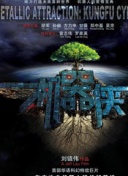


Throughout the history of the FIFA World Cup, each tournament has been played on different turfs that vary in composition, quality, and maintenance. These turfs play a crucial role in determining the speed, bounce, and overall playing conditions of each match. Let's take a journey through the complete collection of World Cup turfs.
The inaugural FIFA World Cup in 1930 took place in Montevideo, Uruguay. The Estadio Centenario was chosen as the main venue, and its turf was composed of natural grass. This traditional turf provided a lush green surface for the players, ensuring a true and consistent ball roll throughout the tournament.
Jumping ahead two decades to the 1950 World Cup held in Brazil, the iconic Maracanã Stadium in Rio de Janeiro hosted the final match between Uruguay and Brazil. The turf used was also made of natural grass, but the unique climate and meticulous maintenance provided an impeccable playing surface that set a new standard for future tournaments.
For the 1966 World Cup in England, Wembley Stadium was the primary venue, famous for its legendary turf. The Wembley turf was characterized by a mixture of rye grass and Bermuda grass, giving it a distinctive texture and durability. The precise groundskeeping techniques used ensured an ideal playing surface for the players.
In 1994, the United States had the honor of hosting the World Cup. One of the standout venues was the indoor Pontiac Silverdome in Detroit. Instead of natural grass, an artificial turf known as AstroTurf was used. While this type of turf provided consistent playing conditions regardless of weather, it lacked the authenticity and natural feel of grass turfs.
The 2002 World Cup was held in South Korea and Japan, introducing a new type of turf: Desso GrassMaster. Used in the Seoul World Cup Stadium, this hybrid turf combined natural grass with artificial fibers, providing durability and stability. It offered a surface that minimized the risk of injuries and maintained excellent playing conditions throughout the tournament.
Brazil once again hosted the World Cup in 2014, showcasing the Arena de São Paulo. The turf used was a variant of Desso GrassMaster, specifically engineered for the Brazilian climate. Its unique composition allowed for better water retention and heat resistance, ensuring consistent gameplay under the intense tropical conditions.
The most recent World Cup in 2018 was held in Russia, with the iconic Luzhniki Stadium serving as the principal venue. The turf used was a combination of natural grass and reinforced fibers, similar to the Desso GrassMaster. This innovative hybrid turf offered exceptional durability, traction, and ball response, enabling players to perform at their best on the grandest stage of all.
In conclusion, the World Cup has witnessed a fascinating evolution of turf technologies. From the natural grass turfs of the early years to the hybrid turfs of recent tournaments, each surface has contributed to the unique playing experiences and memories created by the world's greatest football event.
